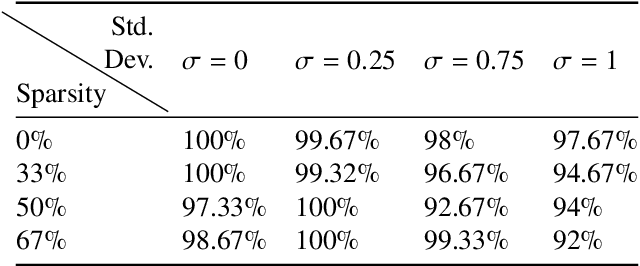Piotr Luszczek
SpikeRL: A Scalable and Energy-efficient Framework for Deep Spiking Reinforcement Learning
Feb 21, 2025Abstract:In this era of AI revolution, massive investments in large-scale data-driven AI systems demand high-performance computing, consuming tremendous energy and resources. This trend raises new challenges in optimizing sustainability without sacrificing scalability or performance. Among the energy-efficient alternatives of the traditional Von Neumann architecture, neuromorphic computing and its Spiking Neural Networks (SNNs) are a promising choice due to their inherent energy efficiency. However, in some real-world application scenarios such as complex continuous control tasks, SNNs often lack the performance optimizations that traditional artificial neural networks have. Researchers have addressed this by combining SNNs with Deep Reinforcement Learning (DeepRL), yet scalability remains unexplored. In this paper, we extend our previous work on SpikeRL, which is a scalable and energy efficient framework for DeepRL-based SNNs for continuous control. In our initial implementation of SpikeRL framework, we depended on the population encoding from the Population-coded Spiking Actor Network (PopSAN) method for our SNN model and implemented distributed training with Message Passing Interface (MPI) through mpi4py. Also, further optimizing our model training by using mixed-precision for parameter updates. In our new SpikeRL framework, we have implemented our own DeepRL-SNN component with population encoding, and distributed training with PyTorch Distributed package with NCCL backend while still optimizing with mixed precision training. Our new SpikeRL implementation is 4.26X faster and 2.25X more energy efficient than state-of-the-art DeepRL-SNN methods. Our proposed SpikeRL framework demonstrates a truly scalable and sustainable solution for complex continuous control tasks in real-world applications.
Materials Fingerprinting Classification
Jan 14, 2021



Abstract:Significant progress in many classes of materials could be made with the availability of experimentally-derived large datasets composed of atomic identities and three-dimensional coordinates. Methods for visualizing the local atomic structure, such as atom probe tomography (APT), which routinely generate datasets comprised of millions of atoms, are an important step in realizing this goal. However, state-of-the-art APT instruments generate noisy and sparse datasets that provide information about elemental type, but obscure atomic structures, thus limiting their subsequent value for materials discovery. The application of a materials fingerprinting process, a machine learning algorithm coupled with topological data analysis, provides an avenue by which here-to-fore unprecedented structural information can be extracted from an APT dataset. As a proof of concept, the material fingerprint is applied to high-entropy alloy APT datasets containing body-centered cubic (BCC) and face-centered cubic (FCC) crystal structures. A local atomic configuration centered on an arbitrary atom is assigned a topological descriptor, with which it can be characterized as a BCC or FCC lattice with near perfect accuracy, despite the inherent noise in the dataset. This successful identification of a fingerprint is a crucial first step in the development of algorithms which can extract more nuanced information, such as chemical ordering, from existing datasets of complex materials.
 Add to Chrome
Add to Chrome Add to Firefox
Add to Firefox Add to Edge
Add to Edge